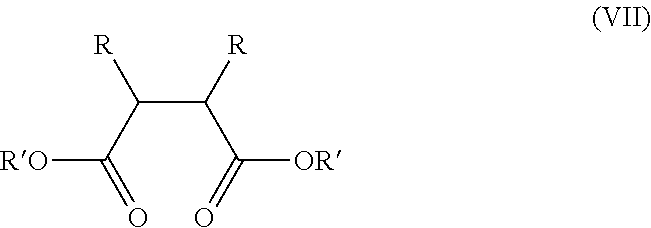Gas-phase polymerization process having multiple flow regimes
a gas-phase olefin and polymerization technology, which is applied in the field of gas-phase olefin polymerization process improvement, can solve the problems of not performing the same, complicated situation, additional problems, etc., and achieve the effects of improving the dispersion of catalyst active sites, reducing the cost, and increasing complexity
- Summary
- Abstract
- Description
- Claims
- Application Information
AI Technical Summary
Benefits of technology
Problems solved by technology
Method used
Image
Examples
examples
[0039]The following examples are polymerization reactions which can be conducted in a dual-regime reactor similar to that described in FIG. 1 of U.S. Pat. No. 6,818,187, in which there is a riser section operated under dilute fast-fluidization regime, and a downcomer section operated under a packed-moving-bed regime. Both reactor sections are run with the same gas composition and very similar pressure. Polypropylene homo-polymer product or propylene-ethylene random copolymer product is made in the presence of hydrogen as a molecular weight regulator.
[0040]
ExampleComparative AComparative BABCatalystZ-N (see Example of US 6,825,146)DonorDCPDMS (Dicyclopentyldimethoxysilane)95 mol % DBS (di-n-butyl sebacate) + 5(also called “D-Donor”)mol % “C Donor”(methylcyclohexyldimethoxysilane)ProductHomo PolypropylenePropylene-EthyleneHomoPropylene-EthyleneRandom CopolymerPolypropyleneRandom CopolymerAverage Particle Size2222(mm)Particle Settled Bulk415432415430Density (kg / m3)Average Reactor3.24 ×...
PUM
| Property | Measurement | Unit |
|---|---|---|
| mole ratio | aaaaa | aaaaa |
| density | aaaaa | aaaaa |
| temperature | aaaaa | aaaaa |
Abstract
Description
Claims
Application Information
 Login to View More
Login to View More - R&D
- Intellectual Property
- Life Sciences
- Materials
- Tech Scout
- Unparalleled Data Quality
- Higher Quality Content
- 60% Fewer Hallucinations
Browse by: Latest US Patents, China's latest patents, Technical Efficacy Thesaurus, Application Domain, Technology Topic, Popular Technical Reports.
© 2025 PatSnap. All rights reserved.Legal|Privacy policy|Modern Slavery Act Transparency Statement|Sitemap|About US| Contact US: help@patsnap.com



